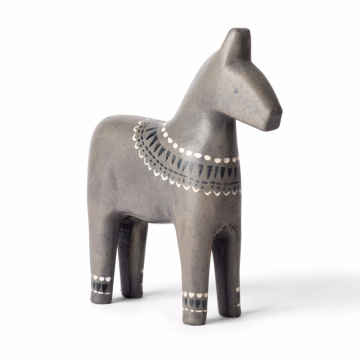The Structure of the Japanese Language
The Japanese language exhibits a unique and intricate structure that sets it apart from many other languages. Central to its grammatical framework is the use of particles, which serve as markers that indicate the relationship between words in a sentence. Unlike languages such as English that rely heavily on word order, Japanese employs these particles to convey meaning, providing flexibility in syntax. For instance, the particle 'は' (wa) is used to denote the topic of a sentence, while 'が' (ga) marks the subject. This particle system allows for varied sentence structures, contributing to the distinctive rhythm of spoken Japanese.
Another fundamental aspect of Japanese is its verb conjugation system, which is considerably more complex than that found in many Indo-European languages. Verbs in Japanese conjugate to reflect tense, mood, and politeness levels. There are two main verb groups, with conjugation patterns that indicate whether an action is complete or ongoing. The aspect of politeness is particularly crucial, as different conjugations are employed to express varying degrees of respect towards the listener or the subject of the action. This dynamic creates layers of meaning that go beyond simple grammatical structure.
Honorific language, or 'keigo,' further enriches the Japanese linguistic landscape. This form of language is categorized into three main types: 'sonkeigo' (respectful language), 'kenjougo' (humble language), and 'teineigo' (polite language). Each type has specific usage rules depending on the social context and the relationship between speakers. The incorporation of honorific language is essential for effective communication, emphasizing the cultural value placed on hierarchy and respect within Japanese society.
In summation, the structure of the Japanese language is marked by its unique set of grammatical rules, the flexibility stemming from its particle system, intricate verb conjugations, and a nuanced honorific system. Together, these elements create a coherent framework that not only preserves meaning but also reflects cultural values, making the study of Japanese both challenging and rewarding.
An Overview of Japanese Writing Systems
The Japanese language employs a unique combination of three primary writing systems: Hiragana, Katakana, and Kanji. Each of these systems plays a distinct role in conveying meaning, structure, and nuances within the language, contributing to its complexity and richness.
Hiragana is often regarded as the foundational script for the Japanese writing system. This syllabary consists of 46 basic characters, which represent phonetic sounds and are used primarily for grammatical elements, native Japanese words, and to indicate inflections. Historically, Hiragana originated from cursive forms of Kanji during the Heian period (794-1185), when women, who were largely excluded from formal education, developed it to write poetry and literature. Today, it serves a crucial function in the language, particularly in children’s literature and language education, where learners first encounter it before progressing to more complex characters.
Katakana, another syllabary containing the same number of characters as Hiragana, is used primarily for transcription of foreign words, onomatopoeia, and technical or scientific terms. It was developed around the same time as Hiragana but has historical ties to the Buddhist monks who sought to create a more concise writing style for Japanese sounds. Katakana is distinct in its angular shapes and is easily recognized in written text, adding clarity when distinguishing imported terms or jargon, particularly in modern contexts such as advertising and technology.
The third writing system, Kanji, consists of thousands of characters derived from Chinese scripts, each representing a concept or a word. Imported to Japan via cultural exchange with China, Kanji serves to express more complex ideas that cannot be conveyed through Hiragana or Katakana alone. The interplay of these three writing systems allows for a multi-layered approach in written communication, enhancing both the aesthetic and functional aspects of the Japanese language.
The Role of Kanji in Japanese Language
Kanji, the logographic characters derived from Chinese, play a vital role in the Japanese language. Introduced around the 5th century, Kanji has evolved into one of the three primary writing systems used in Japan, alongside Hiragana and Katakana. Each Kanji character encapsulates a concept or a meaning, making it essential for conveying the intricate nuances of the Japanese language. With thousands of Kanji characters in existence, only about 2,000 are commonly used in everyday writing. This selection, known as Jōyō Kanji, represents a key component of literacy in Japan.
In modern Japanese, Kanji serves multiple purposes. It enhances clarity by distinguishing homophones—words that sound alike but have different meanings. For instance, the word "kawa" can mean "river" (川) or "skin" (皮), and the use of Kanji eliminates ambiguity. Furthermore, Kanji is integral to expressing complex ideas succinctly. A single character may encapsulate a whole notion that would require several words to articulate in other languages. This efficiency underscores Kanji’s significance in both written and spoken forms of communication.
However, the mastery of Kanji presents challenges for learners. The sheer number of characters and their multiple readings—on'yomi (Chinese readings) and kun'yomi (native Japanese readings)—can be daunting. Additionally, the graphical complexity of Kanji often requires considerable memorization and practice. Nevertheless, investing time in learning Kanji is immensely rewarding, as it not only aids in reading and writing the language but also provides insight into Japanese culture and thought. Understanding Kanji unlocks a deeper appreciation of literature, history, and everyday interactions, making it an essential aspect of linguistic and cultural literacy in Japan.
Comparative Insights: Japanese vs. Other Language Systems
The Japanese language presents a fascinating study in contrast when compared to numerous other global language systems. One of its most distinctive characteristics is the incorporation of three writing systems: Hiragana, Katakana, and Kanji. Each of these systems serves a unique purpose: Hiragana is primarily used for native Japanese words and grammatical elements, Katakana is often reserved for foreign loanwords and onomatopoeia, while Kanji, which consists of characters borrowed from Chinese, represents complex ideas and concepts. This multi-layered approach not only enhances the language’s depth but also reflects its historical and cultural evolution.
In contrast, many languages such as English employ an alphabetic system, typically comprising a singular set of characters that denote phonetic sounds. This fundamental difference highlights how the multiplicity of Japanese scripts can encapsulate nuanced meanings and grammatical structures that might require additional words or phrases in alphabet-based languages. For example, the use of Kanji offers a rich visual and contextual reference that single-letter systems often lack, enfolding cultural significance and associations within each character.
The cultural implications of these language structures are profound. The use of different writing systems in Japanese can alter both the speaker's mindset and the perception of the listener. Multilayered scripts instill a heightened awareness of context and politeness levels, an aspect that may not be as nuanced in languages with a more straightforward script. Furthermore, research indicates that the writing system used can shape cognitive processes and influence how speakers organize their thoughts. Thus, exploring the intricacies of Japanese alongside other languages reveals critical insights into how writing systems affect communication and social interaction across cultures.








